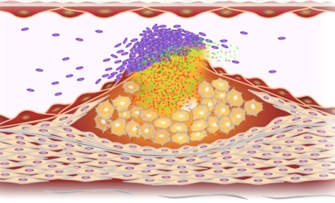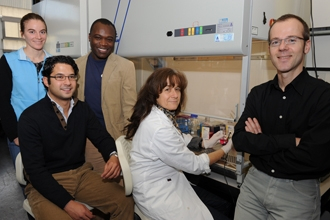

The circulating blood is essential to bring oxygen and nutrients to the organs of the body. Wounds and trauma lead to haemorrhage and blood loss. Thus, the body has developed systems of clotting and fibrinolysis allowing for haemostasis or fluidity of the blood respectively, depending on the conditions. These systems were vital for animals and humans to survive in evolution. Indeed, as hunters and gatherers we were dependent on effective haemostasis in case of the occurrence of injuries and wounds.
Today, as we work behind computers or sit in cars or airplanes, clotting may endanger our health and may cause thromboembolism, strokes and heart attacks. The Department of Cardiology of the University Hospital Zurich has a leading research programme in this area and helped to characterize the regulation and action of a protein produced in the vessel wall, called tissue factor. This protein is only expressed in the inner lining of the vessel wall (endothelium) under certain disease conditions, particularly in response to inflammation, and it ensures coagulation. In normal healthy blood vessels, tissue factor is not expressed, thus allowing for the intrinsic antithrombotic properties of the vessel wall to prevent thrombus formation.
Tissue factor is produced in different forms, i.e. full length and alternatively spliced tissue factor, whose role remains still unclear. In collaboration with the University of Hongkong, we have produced genetically modified animals in which it will now for the first time be possible to delineate the different forms of tissue factor and their regulation. This will allow for a better understanding of clot formation within the human body and eventually its better treatment and prevention.

Clot formation with blood plates and coagulation factor as well as tissue factor within an unhealthy vessel with plaque rupture.

Project Leader Prof. Felix Tanner (right) with his research group.